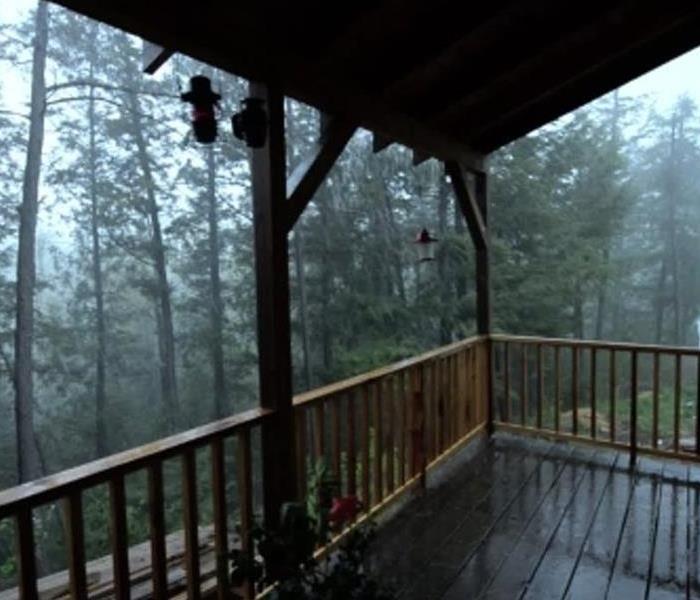Top Signs of Water Damage
7/7/2021 (Permalink)
 Just because you're out of direct rainfall, doesn't mean you're in the clear. Your house could be sustaining water damage.
Just because you're out of direct rainfall, doesn't mean you're in the clear. Your house could be sustaining water damage.
It's critical to recognize the indicators of water damage or prospective water damage when buying or renting a home, as well as when selling a home. Water damage from a flood, fire, or leak can wreak havoc on a home's structure and lead to the growth of mold, posing potential health effects to the residents. Continue reading for advice from SERVPRO Kaufman County & Cedar Creek's experts on determining whether or not a property has experienced or is vulnerable to water damage. Checking the exterior There are several procedures to follow when looking for water damage in your property. It's easier to narrow down the cause of home water damage from external sources if you start from the outside. Keep an eye out for the following things:Checking the interiorLook for the following indicators of water damage within your home:
- Check to check if the house or structure is situated on the property's highest point, with the land sloping away from it. If it doesn't, water damage to the foundation could result when water collects on the sides of your house and seeps in. Regular professional inspections will guarantee that your foundation is in good working order and that any faults are resolved.
- Take a stroll around the house's exterior. Check for downspouts that direct water away from the house, as well as gutters that are in good shape and attached properly. A tiny leak, clog, or needed repair could result in costly property damage.
- On your roof, look for missing or broken shingles. A leaking roof or missing/broken flashing can cause attic leakage, resulting in ceiling water damage. When storms occur, this roof damage may appear to be a minor cosmetic concern, but it might become a prime portal for water into your home.
- Examine all of the window and door frames on the exterior. Is there any softness that could indicate a window leak? Any gaps? A minor separation could result in increased humidity in your home, which could contribute to mold growth. Taking the necessary care to inspect each window or door frame on a regular basis will allow you to detect any problems before they become more serious.
Trust the experts at SERVPROIf you notice water damage in your home, or prospective home or business, SERVPRO's experienced water damage remediation team can help. Our professionals can examine the damage, devise a plan of action, and comprehensively repair the problem, returning the property to its former state. To learn more about how we can help you recover from water damage in your home, or assess moisture in a perspective purchase, find your nearest location and call us now.
- A leak in the pipes is indicated by water rings on the ceiling or walls. While rings are more obvious, look for smaller water spots on the ceiling or walls, which are also prevalent. Go through your house on a regular basis and make a note of any spots that are close to the plumbing. If you can't see any water rings or stains but suspect a leak, listen for it in the walls at night when the ambient noise is at its quietest.
- Spots on the floor that are soft or drooping, particularly near the tub, shower, and sinks. Leaking equipment, such as dishwashers, washing machines, or water heaters, can also cause the marks.
- Tile, laminate, or wood flooring that is cracked or deformed. Water damage can occur on any type of flooring, and as the water seeps in, it can cause warping, splitting, or cracking. While cracked or warped flooring may be obvious, wet flooring may go unnoticed, especially if it's in the corners of the room or in sections of your home where you don't spend much time. Make a point of inspecting these places on a regular basis and keeping an eye out for any damp patches in rooms with carpets, as small water damage might be difficult to notice.
- Look for watermarks, warping, and discoloration in the cabinet under the sink, which could indicate leaking pipes. Cabinets that are damp or moldy are obvious symptoms of a nearby leaky pipe. To get the problem rectified, contact a professional as soon as feasible. This tiny repair expenditure could save you money and trouble in the long run.
- Pay attention to any apparent new ceiling, wall, or window repairs that look like recent patch jobs. Is there any paint that appears to be thicker? These tell tale signs could be concealing water damage. Look for any moldy or mildewy odors, as these can also be indicators.




 24/7 Emergency Service
24/7 Emergency Service